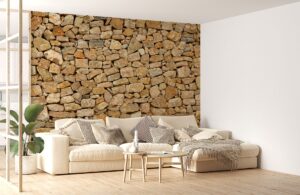How Do Interior Designers Make a Difference?

An article is a written composition on a particular topic, typically part of a newspaper or magazine. It may also be used for research or teaching purposes.
Interior designers work with a range of professionals to create personalized spaces that reflect their client’s personality and lifestyle. They must have excellent communication skills and be able to liaise with suppliers, manufacturers and other vendors.
Creating a space that reflects a client’s personality
In order to create a space that reflects their client’s personality, interior designers must take the time to understand their clients and their lifestyle. They often do this by asking questions about their hobbies and interests, as well as what kind of atmosphere they want to create. The result is a room that is a true reflection of the client’s unique style and personality.
Creating a space that reflects a client’s personality requires creativity and attention to detail. The designer must be able to find the right balance of textures, colors, and patterns to create a cohesive design. The designer also needs to consider the space’s function and how it will be used. Whether the design is for a residential or commercial project, the result should be both functional and beautiful.
Another important aspect of interior design is establishing and maintaining relationships with clients. This requires excellent communication skills, both written and verbal. They must be able to explain their ideas clearly and concisely, and they must also be able to work closely with contractors, vendors, and other professionals.
Creating a space that reflects scottish interior design a client’s personality can be challenging, especially in small spaces. However, a skilled interior designer can use creative and practical solutions to elevate compact living areas. For example, they can use tall bookcases to draw the eye upward and visually elongate the room. They can also incorporate a wide variety of textures to add depth and visual interest.
Creating a space that is functional
Creating functional spaces is one of the key challenges of interior design. This requires thoughtful solutions that balance aesthetics with the occupants’ lifestyles and cultures. For example, open office plans can foster ideation and communication, while natural materials exemplify sustainability and efficiency. Interior designers must also be able to interpret and translate client briefs. This means understanding the correct layout, specific color and pattern requirements, furniture, and exact lighting needs. They must also be able to source products and sometimes even design and commission pieces.
Unlike interior decorators, who use pre-made products to change the look and feel of a space, interior designers must create unique elements for each project. This is especially true for commercial projects, which often require a high degree of coordination with architects and contractors. RMCAD’s program provides an immersive learning experience that allows students to develop their design and technical skills in order to create innovative solutions to real-world problems.
Creating a well-rounded portfolio is essential for interior designers. A strong portfolio demonstrates the designer’s creativity and design skills, and will help to distinguish them from other candidates in their field. It also serves as a promotional tool, allowing designers to showcase their work and attract new clients. A strong portfolio should include a variety of projects, and demonstrate the designer’s ability to meet the specific needs of each client.
Creating a space that is comfortable
Creating a space that is comfortable is one of the primary goals of interior design. Achieving comfort doesn’t just mean making a room look beautiful, but it also means providing a functional experience for the users of the space. This can be done by using various materials, objects, and configurations to bring the space together. This can be done in a variety of settings, from homes to hospitals and shopping centers.
During the planning phase of a project, interior designers work with clients to understand their needs and style preferences. They create detailed plans and drawings and select materials and finishes for the project. They also collaborate with architects and builders to ensure that the final project meets aesthetic and functional requirements.
To achieve the best results, interior designers use different strategies to create a harmonious design. For example, they may use structural devices such as mirrors and glass walls to stretch a space and make it feel more spacious. They also balance the aesthetics of a room by choosing furniture and decor that complements each other. They also use colors and textures to create a specific mood.
In addition to their design skills, interior designers must be able to meet deadlines and adhere to strict standards. They must also be able to communicate effectively with clients and other design professionals. This is especially important when working on large projects that require collaboration.
Creating a space that is beautiful
If you want to transform your home or office into something truly special, you should consider hiring an interior designer. They will help you select the right furniture and finishes to create a cohesive design that is both functional and beautiful. They can also advise you on how to use lighting and paint colors to create a specific look and feel for your space.
They will also interpret and translate a client’s brief by determining the correct layout, specific color and pattern, and the right furniture requirements to meet your needs and create a successful space. They will liaise with a variety of professionals, including architects and contractors, to ensure that the design is delivered on time and within budget.
Professional Interior designers have extensive experience working with different design styles, including traditional, contemporary, and modern. They know how to make the most of a room or house’s space, which is especially important in small homes or apartments. They also have fresh ideas about coordinating furniture and accessories that will make your space stand out from the rest.
While decorators are skilled at beautifying spaces, they don’t work with the same level of detail that interior designers do. They often work with furniture makers and upholsterers, but they don’t usually take on structural changes such as removing walls or adding new windows.





